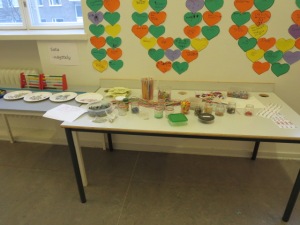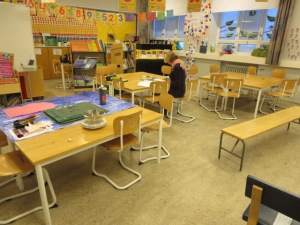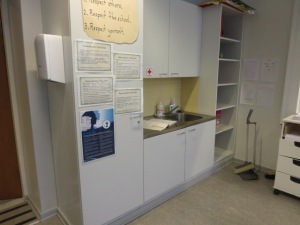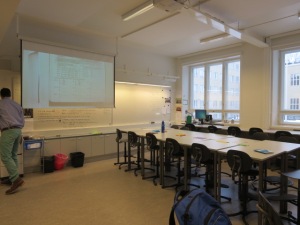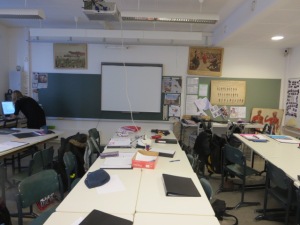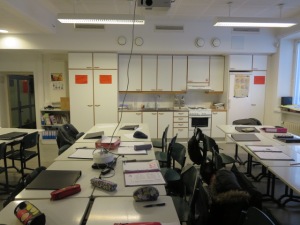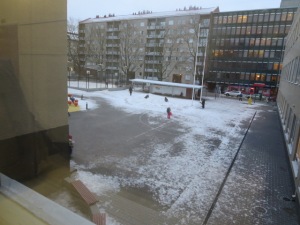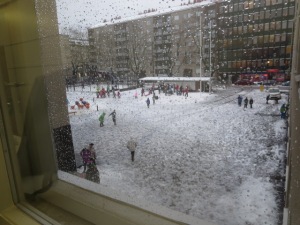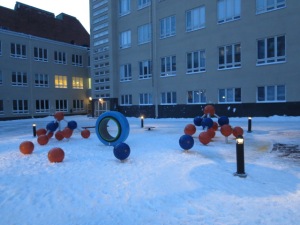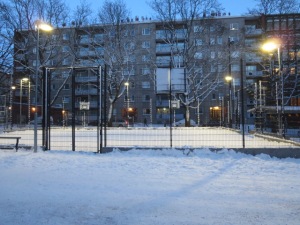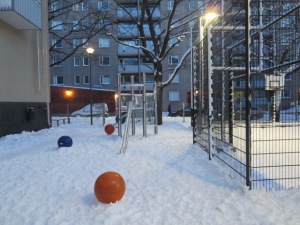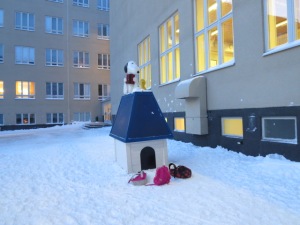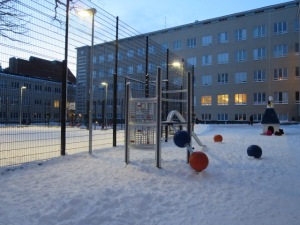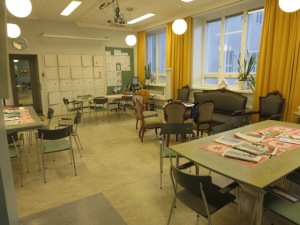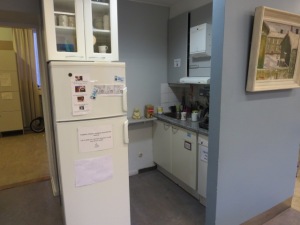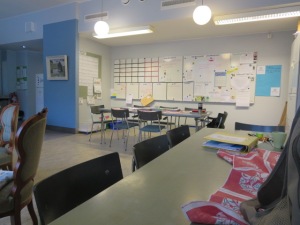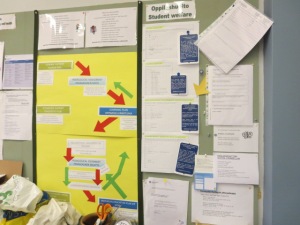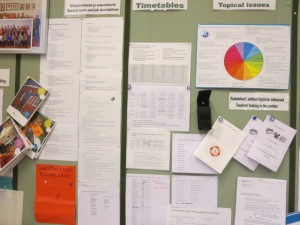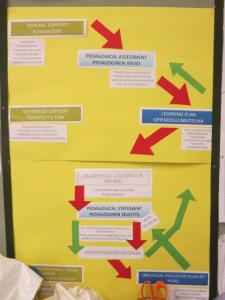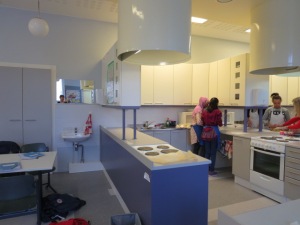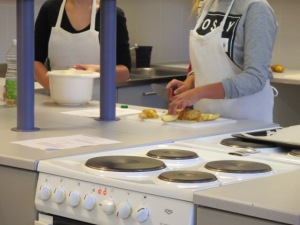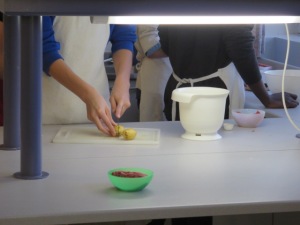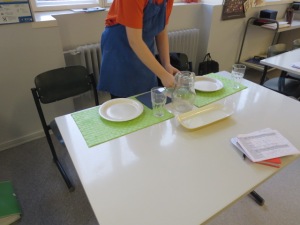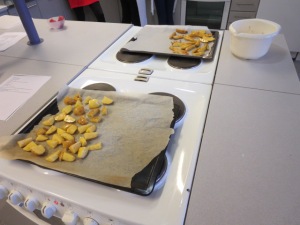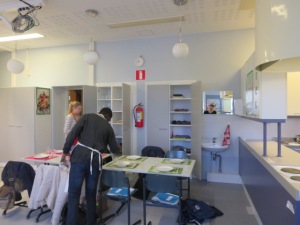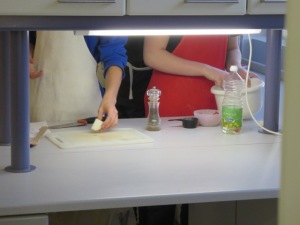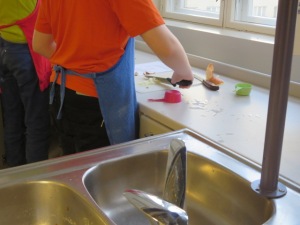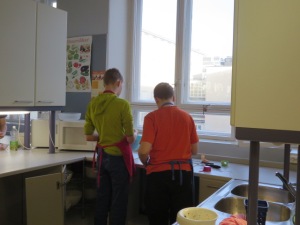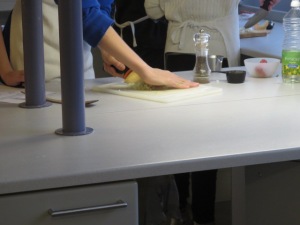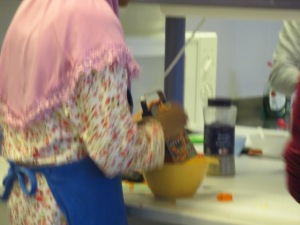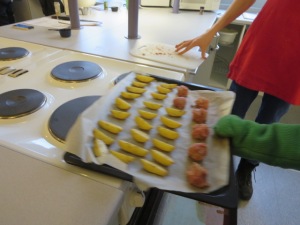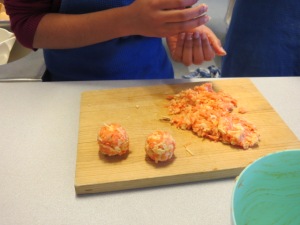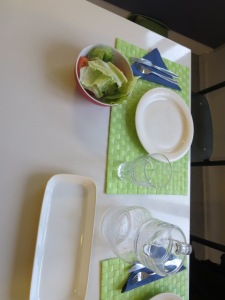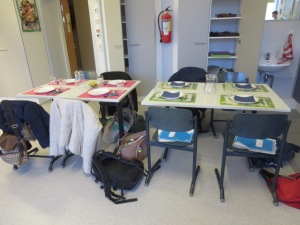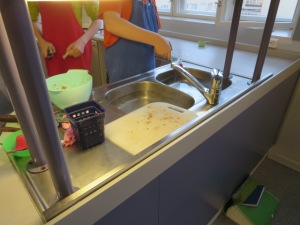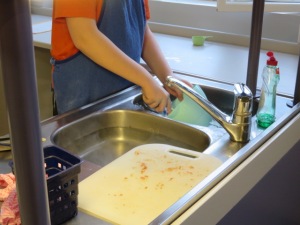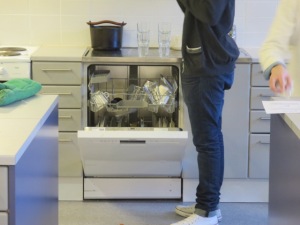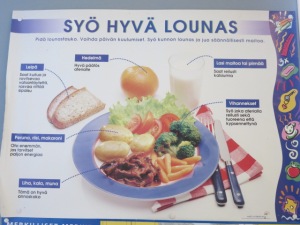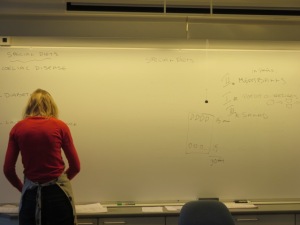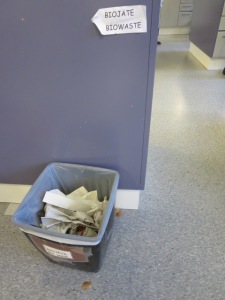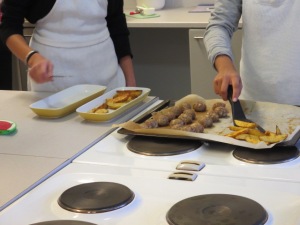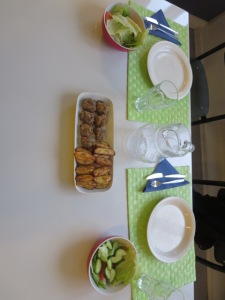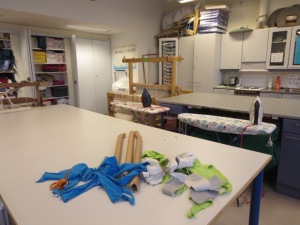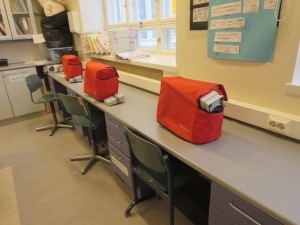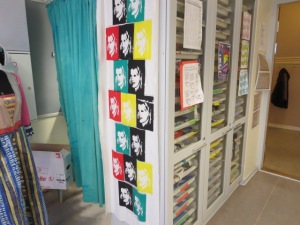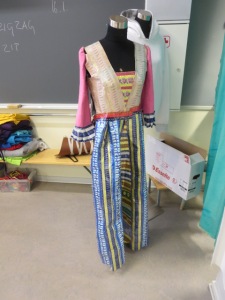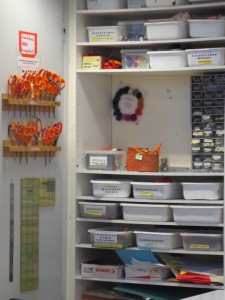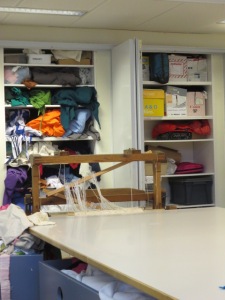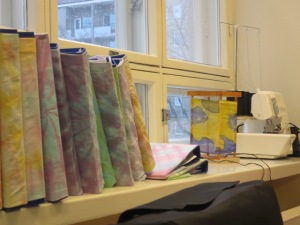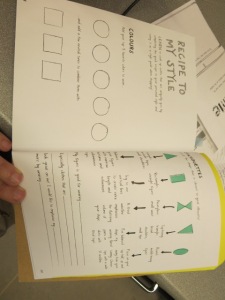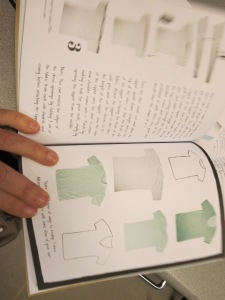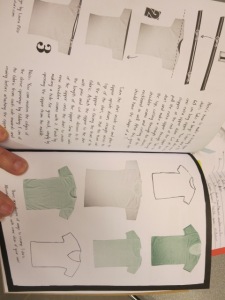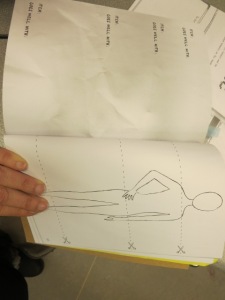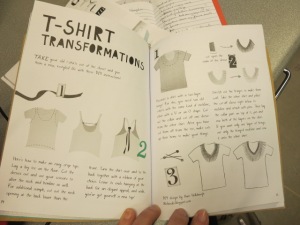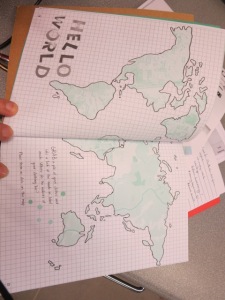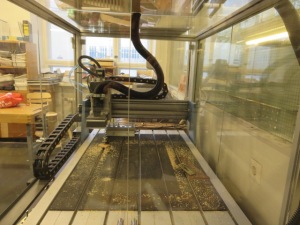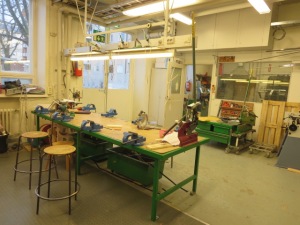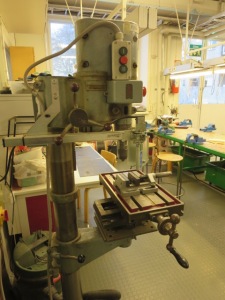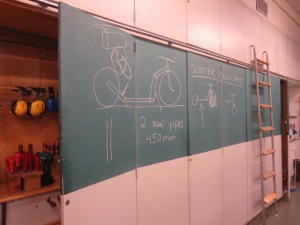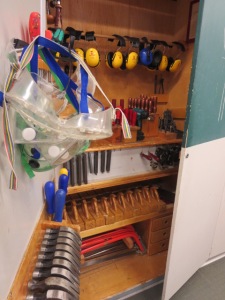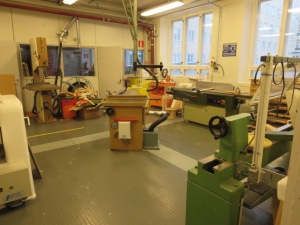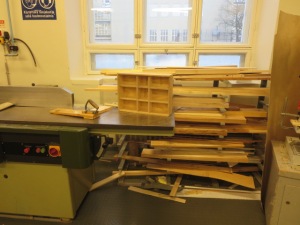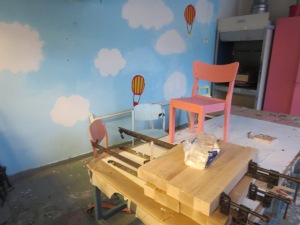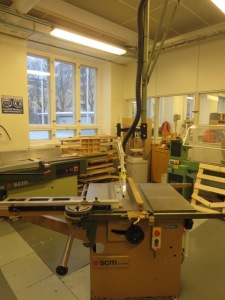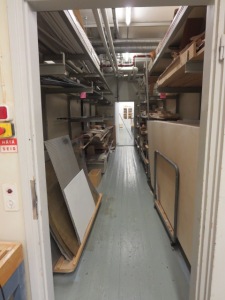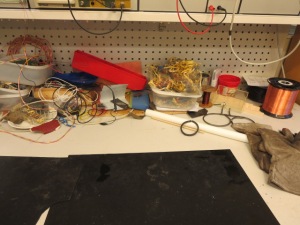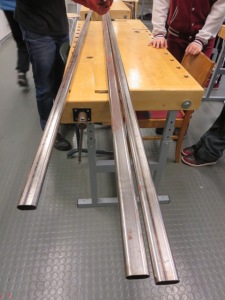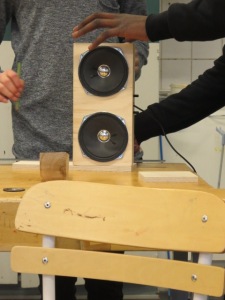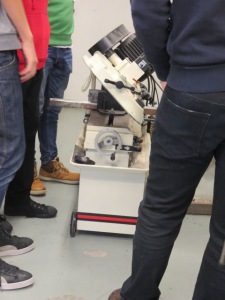Though the first part of my trip was a visit to Lapland and Helsinki, I will start this blog with my observation of the schools in Helsinki since it was the primary reason for my visit there (it is the only non-francophone country I chose to visit because I had to see for myself what the fuss about their successful education system was all about). However, as my second part will reveal, there is also a lot that can be learned about a culture and its vision of education from looking at how their tourist attractions are presented.
Before I embark on a further description, I have to make it clear that I had a rather limited experience since I visited a public IB Middle School (Ressu IB Comprenensive school) for about two weeks and a High School (the European school of Helsinki) for one day. Yet, at the same time, it was a very rich experience since I received a very warm welcome from the IB coordinator, the head of the school and the numerous teachers I met. All took time to talk to me and answer my numerous questions with enthusiasm and I was fortunate enough to observe a rich sample of classes. I was all the more surprised that by now I had imagined they would be sick and tired of being constantly under scrutinity (the MS admiting to constantly having visitors from around the world).
As with all my previous experience, the visit proved far more enriching than I had expected and I will try to share with you the highlights of what I learned there and the questions it made me ponder. I understand we need to be aware of the iceberg effect, the demographics of Finland being very different from the ones in the US and the schools I observed had far less students (they had 54 students “graduating” from the Middle School last year and class sizes are usually 20 to 24). All students are at least bilingual, Finish and Swedish being the two official languages of Finland) and everyone I met at the school or in the street spoke English too (as the IB coordinator put it: with only a little over 5 millions speaking Finish, we have no other choice). Given research done on bilingualism and the brain one could also argue they are at an unfair advantage to begin with, but at the same time, couldn’t it be the first lesson we learn by boosting language learning in our school and making it a priority rather than an afterthought, especially in this day and age of growing world exchange?
The first thing that struck me was the classroom set up and how the classes were conducted: it looked more like a study hall than a classroom. In all classes, I observed students working in groups of 2 to 5 or 6 while a few chose to work indiviually; the groups actually seemed to get larger as the grades got higher. When I asked the teachers, they said most of the time they leave it to the discretion of the students to chose who they want to work with, and yet, this is not quite as random as it seems: from grade one, as illustrated by the picture below, students are immersed in this kind of setting and by the middle school, they are quite comfortable with this kind of approach and know what is most efficient for them and who they work best with.
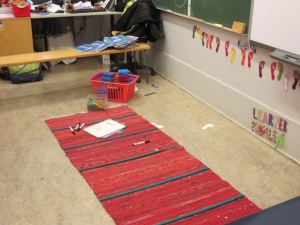 this floor area was were the teacher worked with a smaller group who had not gotten the concept while other students were working on worksheet independantly or with another teacher.
this floor area was were the teacher worked with a smaller group who had not gotten the concept while other students were working on worksheet independantly or with another teacher.
This is what the math 5th grade class looked like:
and this is what the 9th grade classroom looked like:
The class is entirely student centered and, most of the time, the teacher can be seen going from one group to the next either checking their work or answering questions while students are actively engaged in problem solving. Very often, especially in the lower grades, there are more than one teacher in the room. There can be a co-teacher, since no new teacher is left alone to teach: they are paired up with a veteran teacher who teaches and plans with them a few classes a week. There can also be a special need teacher whose main role is to help the students they have been assigned but who also help other students as needed. Having tried this kind of approach in my classes with far less success, I think it has to do with the fact that our students have been so used to a more traditional approach that it takes time and energy to acclimate them to this kind of approach and we often have to control groups or remind students to stay on task because this is somewhat outside of their comfort zone. What also struck me was that the main trait was collaboration rather than competition which seems more prevalent in our education system: it’s not so much about being better than the others but about learning at your own level, not being afraid to ask help from others, wheter it’s the teacher or another student. If this approach has proven successful, its success depends on its consistent use in all classes from day one; having it scattered here and there seems to defeat its purpose since it seems to throw students off their level of comfort (I have had students complaining I was not “teaching” them when I left them to figure things out on their own).
During the first few classes I observed, I was rather surprised by a feeling that the classes didn’t seem very challenging: students seemed relaxed and what was being taught didn’t appear very complex. Very soon I was made to understand it was a conscious choice: children are not allowed into first grade until they are 7 to make sure they are mature enough; it’s not about being ahead of the pack but more about being at your level of comfort. An American teacher who taught first grade explained how when she tried to teach reading and writing to her first year students she was told that it was too much too soon, the first year being more one when students learn how to socialize and work together. From what I observed, the Fins are not after teaching as much as possible as quickly as possible but rather after giving time for the students to understand in depth before moving on to the next item. Intersingly enough, their methods are based on American reserach showing that it’s better to uncover than to cover, also mentioning that what one does, one remembers (we often leave very little time for students to muddle thru learning because we are so busy trying to keep up with the curriculum).
Another research the Fins have taken to heart is the one done on the power of concentration one can demand of students. In our school, we are demanding that our students be “on” from 8 to 3 with only five minutes breaks, barely enough time to get to their next class, and half an hour for lunch. All the schools I have observed so far have at least one 15 to 30 minutes break during the morning and another one during the afternoon but the Middle School I observed went beyond this minimum: after each 45 minute class they had a 15 minute break during which they have to be outside, no matter what the weather and it does get cold in Finland. Depsite these breaks, school started at 8:00 and ended at 4:00 (excpet on Wednesdays when it ended at 2:00) only an hour later than our school system but kids where fully engaged during their classtime while I find my students more often than not exhausted during the day, especially during the last few periods.
When I asked about Snow Days, they smiled and said, “what for?If it’s cold, we bundle up our kids a bit more.” Yet I observed a lot less cold or sniffles there (actually I saw none) than I do here in warm and sunny Monaco where I am currently teaching.
The other great benefit to this kind of schedule is that it allows for teacher collaboration: while one or two teachers suppervize recess, the rest of them can be found in the inviting teacher lounge chit-chatting, sharing and relaxing together while meeting every Wednesday from 2 to 4.
Teachers have less classes to teach; on average, they teach 21 hours a week (18 classes) and since they are on a block schedule, they often have a free morning or afternoon to work on their prep; they are also far less into formal time consuming testing; instead, they constantly assess their kids informaly as they watch them work during classes. All this is conducive to a very relaxed atmosphere where people are eager to work and support each other, a far cry from my day spent in the classroom (including lunch time) and my nights and weekends spent planning, writing tests, grading them, entering them for parents and students to see immediately. As more and more companies are discovering and implementing, the “less is more” approach has proven much more efficient than the running ourselves and our students to exhaustion that seems to have become the pattern in our school: rahter than re-think the big picture, we keep adding more demands: more testing, now of both teachers and students! and more curriculum covering without really taking out anything…
The next drastic difference I observed was in the curriculum. Though at our school we offer a wide array of different classes, we only have a few that are actually mandatory; not so in Finland where the curriculum dictates that students take a variety of practical classes. The following classes I observed epitomize their philosophy of education that goes beyond teaching the academics. In 7th grade, students have a mandatory Home Economics classes where they learn how to balance a budget but also basic skills such as cooking a meal, complete with chosing proportions, preparing the food and cooking it, setting the table and doing the dishes, in a facility large enough to let all students participate in all these activities; the photos below illustrate the class I observed where students made a meal of meatball (with a vegetarian version for students who were vegetarians), oven baked potatoes and a mixed salad with the vegetables of their choice. The kids then had time to leasurly eat their lunch during this two-hour period scheduled around lunch time. Notice also the recycling bin (they have recycling down to a science with so many bins I had to check before throwing out anything) and the theoretical part with posters and a lesson on special diets.
8th Grade also has a mandatory class we have not seen in our school for a long time: students can choose between a workshop or a textile class. The classes I observed had all girls in the textile class whereas boys chose the workshop. As illustrated by the following pictures, these are rich classes, offering everything from designing and sowing your own outfit while reflecting on what is in your wardrobe and what people wear around the world, knitting, looming and dying fabric, to name a few in the textile class, while the workshop looks like a real life workshop complete with Professional machinery and materials of all kinds and dimensions. In the workshop I observed, students who were working on building a paddle bike but one of the student worked independantly on building a speaker, teachers letting room for students individualisation. Students can then chose to continue with these classes as optional in upper grades. Notice that these classes do not exclude classes like the art where I observed a class working on portraits or music where I saw a class working on latino music: as a culminating activity after learning about the instruments and how to play them, students were given a variety of musical instruments to mark the beat while the teacher played the background music on the piano.
These classes got me thinking… when did we decide schools were a purely academic, intellectual enterprise? Should not their role be also to teach daily life basics, especially at a time when both parents work and have less and less time to teach them? Isn’t the reason we have so many failures the very fact that we only serve one kind of crowd: the highly academic, intellectual population? One might argue that won’t leave enough time to teach the other essentials and yet Finland has proven by its successful test score that one doesn’t have to exclude the other. Students are no longer tracked into a do or die intellectual mode and by High School they can chose to go on to a regular HS or to a Professional school (interestingly enough, IB is now consideringa Professional diploma). According to the head of the Middle School, in Helsinki, 75% choose the regular HS path and 25% choose the Professional path while in Finland the average is 50/50. Choosing a path doesn’t mean you are locked into it since there is fluidity between the two and there is even a hybrid path for what they call “seekers”, students who are undecided. As she emphasized, here in Finland, we make sure everyone is taken care of (sounds like our “no child left behind” in a much more efficient and pleasant manner…). One might question the budget it would take for a country as large as the United States but isn’t it time we start spending more money on education than on jails? The Finish make sure that their student well being is taken care of, free meal for all, a social assistant or special ed. teacher when needed, and paid public transportation to school or to field trips:
Education
One of the basic principles of Finnish education is that all people must have equal access to high-quality education and training. The key words in Finnish education policy are quality, efficiency, equity and internationalisation.
In Finland everyone has the right to free basic education, including necessary equipment and text books, school transportation and meals. Post-compulsory education is also free: there are no tuition fees in general and vocational upper secondary education, in polytechnics or in universities. Education is primarily co-financed by the Government and local authorities.
Last but not least, at a time where the Charlie Hebdo events have revealed in French schools the lack of civic engagement from a number of students actually praising terrorist acts, isn’t it time we bring back some kind of civic/moral education? Finland has a mandatory ehtics class and a religion class, teaching either Evangilical Lutheran doctrine to the majority of the students who belong to this national faith, but also offering Muslim or Jewish classes to other students at the same time while others can elect to take a religion class; this makes for interesting debates between the classes who work on a project together at some point during the year. This is complemented by an ethics class, also mandatory. There, religion and ethics are not considered as something students might hear about from their family or Church but it becomes an integral part of their general education.
Of course, not everything is perfect in Finland and like everywhere else, they have to contend with curriculum revisions (there is one rather drastic that will be put in place next year) and budget cuts: the principal explained to the staff and to me how all public services had to cut 0.45% of their budget and she was agonizing as to what would have to go while including the teachers in the discussion, in the true collaborative spirit I have observed in Finland. Notice too how the government lets the schools make their own decision as to what to cut; there is an implicit trust of schools and teachers and, though the government has strict guidelines, teachers and administrators are trusted to make the right decision as to how to implement these guidelines. So, no, the Finish system is not all perfect but as a working model outside the narrow box we have built for our education, it certainly offers another way to think about SUCCESSFUL education for ALL, not just for the few who are good at playing the game of school. Though if we look below the iceberg, we might contend as many have, that their situation might be in part the reason for their success (and by the way, there were many minorities in the classes I observed), we can still learn a lot from their different approach to education. I am greatly aware that my observations are very limited since I only observed one school for 2 weeks and another for one day, both in the city, so I am not trying to offer a general overview of Finish education but I am grateful for this eye opening experience that has allowed me to re-think about the role of education and I hope some day we will have leaders that have the courage to question our current failing education system and try to find in-depth solution, rather than keep adding more constraints that have become impossible to fulfill and then create a blame-the-teacher situation that has become too prevalent and destructive in our schools. Finland has also clearly demonstrated that more testing is not the answer ; all it seems to accomplish in our school system is to reinforce the feeling of being a failure for our students who are not good at playing this kind of game; we seem at time more interested in promoting failure than actually educating – who can blame our students for being more interested in their grade than in learning when it is clearly what we value most as a society… These are, of course, very personal thoughts and I welcome any comments or questions to continue what I think is an urgent discussion we need to have in education.
Stay tuned for part two where I will share what I observed thru my visits of Museum, monuments and parks, and how this notion of learning as an enjoyable yet central component seems to permeate beyond the classroom.

